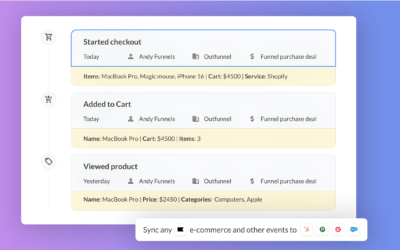Last updated: March 22, 2022
I love being a part of a small marketing team. At least on most days.
But then there are days where there don’t seem to be enough hours to get it all done. And no matter how much you push yourself to put in more hours (or daydream about having double the manpower and triple the budget), the work keeps piling up.
Sounds familiar? Chances are it does.
According to research by Airtable, 86% of marketing leaders say their current workload is creating stress for their team. Further, the average marketing leader spends 13 hours per week on manual, operational tasks. Not very efficient, is it?
So, what can be done to combat these issues and reduce the workload? This article covers the 101 of efficient marketing. Read on or jump to the sections that are most relevant to you:
- What can you do to be a more efficient marketer? First, ask these two questions.
- “Should I be doing this?” aka prioritizing marketing activities like a pro
- “How should this get done?” aka executing marketing in the most efficient ways possible
What can you do to be a more efficient marketer? First, ask these two questions.
Typically, a marketing team runs on a structure of set goals and plans for execution: from creative ideation, prioritization of ideas to running campaigns and continuous monitoring, analysis of results, followed by iteration.
For efficient execution, you can start by asking yourself the two following questions:
- Should I be doing this?
- How should this get done?
The first question begs an evaluation of ideas and brutal prioritization. This will help you focus on the most impactful activities and minimize the fear of not doing the gazillion other things you could be doing.
Answering the second question means looking at the processes of executing the activities and making sure the way you go about doing the activities is the best, most efficient way to do them.
“Should I be doing this?” aka prioritizing marketing activities like a pro
Here at Outfunnel, we evaluate and prioritize ideas following the RICE framework, a version of the relatively widespread ICE framework. ICE looks at the potential Impact, Confidence and Ease (or in some versions, Effort) of an idea, and the R in RICE simply adds Reach to the equation.
So, the ICE framework helps you sift out ideas that will have high Impact, high Confidence (i.e. chances of success), and high Ease of implementation, meaning it will not take up too much of your resources, i.e. money or time.
Or, like Michael Taylor from ladder.io puts it:
“Rather than deciding via the HiPPO method (Highest Paid Person’s Opinion), ICE ranking lets the best ideas rise to the top, no matter where they came from.”
For us, adding the R for Reach made sense because we want to make sure we can scale our efforts to reach as many people as possible.
Additionally, you can add different multipliers for each of the factors, depending on your circumstances. For example, if you have a decent pool of resources, then Ease can have a lower multiplier. We’ve added more weight to Confidence, because if we know similar tactics or strategies have worked for us or others in our network before, there’s a significantly higher chance for success.
“How should this get done?” aka executing marketing in the most efficient ways possible
There’s no single technique or framework that can guide efficient marketing execution (or at least, I haven’t found one yet). But there are two things you can rely on for saving a ton of time: delegation and automation.
Marketing efficiency excellence part 1: Delegation
As the marketing department of a company, you likely have a key role to play in demand generation, lead generation, lead nurturing, sales enablement, customer onboarding and retention, everything related to the brand, and possibly even product or service design.
And as a small team, you likely don’t have the expertise or skills necessary for all of these down to a T. So, you must be realistic about what you can and cannot do.
I consider myself a generalist, with a knack for content marketing, SEO and partner marketing. However, my responsibilities at Outfunnel not only include these chunks of work, but also expand beyond these three fields.
So, I’ve made sure I have a small army of collaborators, agencies and freelancers to help me execute our ambitious marketing plans:
- Content marketing — 3 freelance copywriters with different strengths to help produce content (although I still sometimes write content as well, like in the case of this blog post)
- SEO — a relatively small boutique agency* for white hat link building & technical SEO support
- Design & development — a small boutique agency* for creating marketing collateral and our public pages, and a freelance illustrator for creating unique illustrations
- PPC — a small boutique agency* who audits and improves the PPC campaigns we create
*A note on the “small boutique” part. I’ve found working with agencies where my points of contact are the ones doing the work is more efficient than working with agencies with more layers of hierarchy and dedicated people for every step of the process.
Additionally, we use various expert freelancers on a one-off basis as necessary. I’ve found Advisable super helpful for such cases—it’s helped draw on world-class expertise on a pay-by-hour basis.
P.S. More on how I’ve managed Outfunnel’s marketing as a team of one in this episode of The Growth Hub Podcast.
Marketing efficiency excellence part 2: Automation
Automating tasks and processes allows you to outsource everyday busywork, so you have more time to do strategic and creative work that actually moves the needle.
According to a report by Zapier, marketers most often automate the following tasks and processes: team communication (46%), identifying and targeting customers (42%), scheduling email sends (38%), sending tailored messages (31%), managing subscriber database (29%) and notifying their team of events (29%).
Although I’ve never automated notifications about events to my team, I can definitely vouch for all the other categories.
Below, you’ll find the top automations that can make your work more efficient, according to me and the rest of Outfunnel’s team. After all, we specialize in making sure your marketing processes are efficient (and effective).
1. Automate lead capture for marketing (and sales)
If you’re doing this marketing thing right, you’re probably generating a number of leads for your business every day. How do these end up in your marketing lists? How do the qualified leads end up in your CRM for salespeople to see? If you’re passing incoming leads on to your various tools manually, you’re wasting precious time.
Let’s say your main form of lead capture happens via contact forms on landing pages. You can use automation to make sure these leads get copied over to the company CRM. Do a quick Google search with the name of your web form tool and CRM + “integration” and you’ll likely find several tools that will help you.
Same applies to other sources of leads like calls or messengers. Whatever the main source of your leads, there’s likely a way to make them show up in your sales and marketing tools automatically.
Pro tip: some automation tools are more powerful than others. Do your research thoroughly and don’t simply choose the cheapest (or free) option. Additional features like custom field mapping, passing on files from lead capture to CRM or recording detailed data about the source of the lead can be super useful, depending on your specific business needs.
2. Set up truly automated campaigns
According to Airtable’s Marketing Trends Report, 80% of marketing leaders claim that the volume of campaigns, requests, and content that marketing needs to deliver on has increased over the last year.
The only way to keep up is to automate the campaigns as much as possible. Here at Outfunnel, for example, we’re fans of automated campaigns that get triggered based on data changes in the CRM. In fact, automating our user onboarding emails helped us win back 80% of our time.
Depending on your lead generation, lead nurturing and customer onboarding processes, you can set up a number of such drip email campaigns and then sit back and monitor the results. The options are pretty much limitless, but we’ve put together an article outlining 12 drip email trigger ideas to get your imagination running.
Another area of marketing automation that we have not ventured into much (yet) is setting up automated campaigns to target warm leads with display ads.
Spoiler alert: we are working on a few integrations that will help do this, e.g. set up a Facebook ad campaign that targets people who are in a certain stage in your CRM. As the people move through that stage in the CRM, the audience in Facebook Ad manager would then be automated automatically. Now, wouldn’t that be nice?
3. Keep sales & marketing contact lists in sync aka never copy-paste lists again
From first contact to a sale and beyond, your leads go through various stages of the customer lifecycle. And if you know a thing or two about marketing, you’re not sending the same marketing messages to contacts in all the different stages.
However, often the data about a lead moving between the stages lives in a sales tool rather than in your marketing automation tools. So, how do you make sure your mailing databases are up to date, 24/7?
By connecting your CRM and marketing automation contact lists. This can be quite straightforward if your company uses an all-in-one sales and marketing suite, or you can set up a native or third-party integration to automatically have the contacts kept up to date.
Zapier and its alternatives like Outfunnel, Make (previously Integromat) and Automate.io are some of the data connectors that offer integrations between CRMs and marketing tools.
Regardless of the setup specifics, the win in efficiency is huge. You can configure your marketing campaigns to be sent to audiences defined in the CRM, so they will start and stop based on data changes in the CRM. You’ll never have to export-import lists again and can send out campaigns with full confidence that the lists are up to date.
In other words, you’ll minimize the time spent on contact management.
The most common use case for such automation in B2B marketing is, of course, email automation. But increasingly, companies are discovering the power of such automations for advertising campaigns as well.
Whatever your channel, such automations let you define and set up campaigns once, and then just sit back and monitor the results.
4. Automate marketing reporting
Ahh, data and analytics. If you’re anything like me, you love digging through numbers to see how your work is performing.
The challenge? There’s so much data in so many different sources that digging through it could easily fill my working days and more. Automating marketing reporting can be a major source of efficiency, especially as your numbers grow.
At Outfunnel, we’re in the middle of setting up marketing analytics that would provide us insights and analytics in a truly automated way, so it’s something we haven’t excelled in, at least not yet. So, perhaps I’ll follow up on this once it’s all done. For now, I can just say I can’t wait for when it’ll be done. Getting it set up in a useful way is no easy task.
BONUS: Automate lead segmentation
This one verges on the border of sales efficiency, but as it involves marketing data, it’s worth a mention.
The basic idea here is that you want to segment your leads — turn the big, undifferentiated pool of unknowns into groups of leads based on various parameters.
Perhaps one of the simplest ways to do this is using lead scoring that includes marketing engagement data as a basis. Such scoring will automatically differentiate the warmest leads, making it easy for sales to decide where to focus their efforts.
Closing notes: Wait, all this automation will cost me how much?
Okay, let’s talk about money.
It’s true that you will have to take out your credit card and pay for automations like the ones mentioned above. And no one’s budgets are limitless.
However, implementing all of the abovementioned automations does not have to cost you more than 100-200USD per month, if you choose tools and subscription plans geared for SMBs.
Our current automation setup costs us 138USD per month (3 years ago this was just $50/month).
Taking into consideration average salaries of European marketers, if it saves us even 7 hours of work per month, it’s worth it. I estimate our automations save us 10-15 hours of marketing work every month. Worth every penny, don’t you think?
What helps you be more efficient as a marketer? Are there any pro tips you’d like to share? Let us know in the comments!



